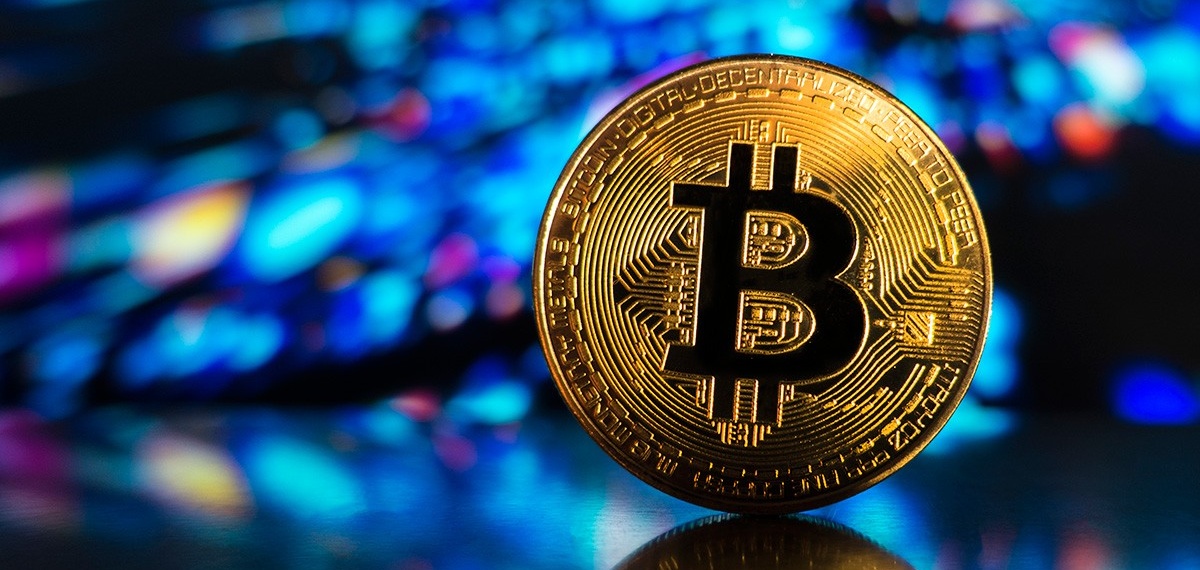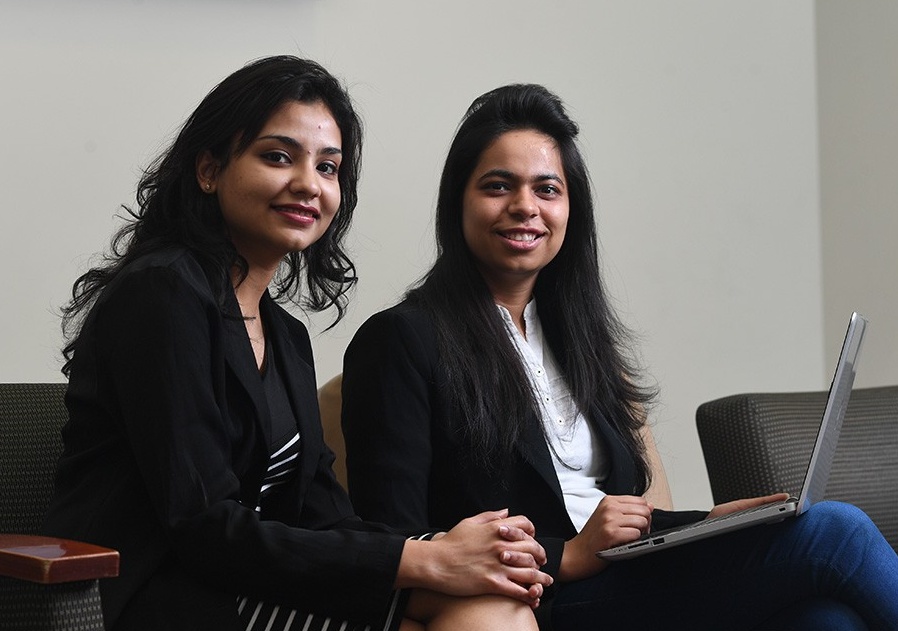The rise of bitcoin
Money — for the people, by the people.
By Kevin Manne

When Laszlo Hanyecz logged onto the Bitcoin Talk forums in 2010 and drafted a message offering 10,000 bitcoin in exchange for two large pizzas, he set the stage for a historic deal.

The two pizzas purchased for 10,000 bitcoin in 2010. In late 2017, 10,000 bitcoin was valued at more than $190 million. Photo: Laszlo Hanyecz
“You can make the pizza yourself and bring it to my house or order it for me from a delivery place, but what I’m aiming for is getting food delivered in exchange for bitcoins,” the programmer from Florida wrote.
Four days later, fellow forum user Jeremy Sturdivant phoned in an order from the U.K. to a Papa John’s in the U.S., had two pizzas delivered to Hanyecz’s house and received bitcoin in return — successfully completing the world’s first documented bitcoin transaction.
To this day, the cryptocurrency community celebrates “Pizza Day” each May 22. There’s even a Twitter account, @bitcoin_pizza, that commemorates the transaction by tweeting out the value of 10,000 bitcoin each day. In 2010, those bitcoin were worth around $41, making it a pretty good deal for the pizza buyer even then. But when bitcoin peaked in late 2017, those two pizzas were worth more than $190 million.
That simple transaction marked the practical implementation of a radical new idea — that currency could be controlled by the people, without intermediation from banks or government. But as most of us struggle to understand what bitcoin is and how it works, an entire field is emerging from this new technology, including more than 1,700 other cryptocurrencies, numerous wallet and storage startups, and entirely new ventures based on blockchain, the technology that makes bitcoin work.
The real Occupy Wall Street
Cryptocurrency traces its roots back to 1998, when computer engineer Wei Dai published his paper, B-Money: An Anonymous, Distributed Electronic Cash System. In it, he outlined the basic properties of all modern-day cryptocurrency systems: “a scheme for a group of untraceable digital pseudonyms to pay each other with money and to enforce contracts amongst themselves without outside help.”
But it wasn’t until 2009 with the creation of bitcoin that cryptocurrency really started to take shape. That year, “Satoshi Nakamoto,” a pseudonym for the person or group of people behind the technology, released the original block of 50 bitcoins and left a message in the code:
“The Times 03/Jan/2009 Chancellor on brink of second bailout for banks”
It’s a headline from British daily newspaper The Times, included as proof of the date the block was created, as well as a comment on the state of the banking industry in Britain at the time. It suggests that the financial collapse of the late 2000s and the Occupy Wall Street movement influenced the creation of bitcoin.
Nakamoto left the project in late 2010, but the creation would live on to achieve more widespread adoption, public acceptance and use in the years ahead.

Cash for the internet
But what is bitcoin? It’s a computer network that enables a new payment system and completely digital money. It’s the first peer-to-peer payment network with no central authority or middlemen, allowing people to buy and sell goods and services directly with each other.
“Bitcoin is a mode of transferring value between individuals,” says Brian Wolfe, assistant professor of finance. “It’s valuable because we believe and agree that it is, just like a dollar.”
According to CNBC, more than 100,000 merchants worldwide accept bitcoin, including Microsoft and Expedia. But major players like Amazon and Walmart haven’t jumped on the bitcoin train just yet, and it’s more uncommon for brick-and-mortar retailers to accept it than online businesses. Some businesses are beginning to, though, such as REEDS Jewelers, which has more than 60 stores in the eastern U.S.
Right now, most people are trading it as an investment rather than using it as a medium of exchange, as evidenced by the run-up in the value of a single bitcoin to nearly $20,000 late last year. And, by design, there’s a finite amount of bitcoin — at most, only 21 million will ever exist. So in some ways, a bitcoin is more like a gold bar than a dollar bill.
The other reason people may not be using bitcoin to buy and sell is because of how much its value changes every day. Wolfe found that bitcoin is six to 10 times more volatile compared to even the most unstable global currencies, such as the Turkish lira.
“Bitcoin isn’t a good store of value,” says Wolfe. “If I hold a dollar today, will it buy a cup of coffee? Pretty close. If I wait until next week, will it still buy a cup of coffee? Most likely. With bitcoin you don’t know. Maybe next week it’ll buy three, but maybe it’ll only buy half a cup.”
Underneath it all, what makes bitcoin work is a technology known as the blockchain — an unchangeable, shared ledger stored across a network of computers that keeps track of every transaction made. Think of it like an Excel spreadsheet that once data is entered cannot be edited, and that everyone has access to, not just a single bank or organization (see sidebar).

Turning dollars into bits
So you’ve decided you want to buy some bitcoin. How does it all work?
Jay Fairbrother, BS ’05, accountant at Kistler Instrument Corp., initially held off on buying cryptocurrency because he was concerned with security. He had previously had his identity stolen through a credit card and didn’t want to do anything risky.
But when the value of bitcoin started to run up in late 2017, Fairbrother decided it was time to get in. He signed up for a Coinbase account, deposited some U.S. dollars and exchanged them for cryptocurrency. He initially bought bitcoin, ethereum and litecoin, but has since expanded his portfolio to around 15 different kinds.
“When I got in, everything was going nuts,” says Fairbrother. “Through January, I had more than doubled my initial investment, which I knew wasn’t sustainable but was fun at the time. Now the value has returned to just above my initial investment.”
Once you have your bitcoin, you need someplace to store it — cue the bitcoin wallet. Much like a physical wallet in your pocket or purse, a bitcoin wallet is a place to store, send and receive digital currency. Wallets come in a few different forms, each with varying levels of functionality and security, from one on a desktop computer, mobile device or the web, to hardware wallets that store bitcoins in offline, secure servers.
Fairbrother says he stores his digital money on a cold storage wallet — a USB stick that has encrypted code on it, secured behind two-factor authentication. He keeps it in a vault, offline, away from relentless hackers.
Companies like Xapo take bitcoin security to the extreme. Carved into the side of a granite mountain in Switzerland sits a decommissioned military bunker. Built in 1947, it served as the Swiss army’s secret headquarters during the Cold War. Now, behind a foot of concrete, steel doors built to survive a nuclear blast and a Faraday cage to protect against electromagnetic attacks, sits Xapo’s 10,000-square-foot data center dedicated to storing millions of dollars worth of bitcoin.
Jay Joysher, MS ’18, is an analyst on the risk and compliance team at Xapo. The company is based out of Palo Alto, California, but Joysher telecommutes from Mumbai, India, for the job. He’s there to add yet another layer of protection to Xapo’s digital currency transactions.
“We monitor the transactions our customers make, and when one crosses a limit in value, we check the entire history of that payment and alert users of any suspicious activity,” says Joysher.
This level of protection is critical because a legion of hackers is constantly working to break into digital wallets and other cryptocurrency services. Thieves pillaged nearly $500 million in bitcoin from the Mt. Gox exchange in 2014, hackers grabbed $72 million from cryptoexchange Bitfinex in 2016 and last year, NiceHash, the Slovenia-based cryptocurrency mining service, was breached.

Anmol Agarwal, MS ’18, and Palak Pahwa, MS ’18, in the Alfiero Center. Photo: Nancy J. Parisi
Regulating the wild west
As cryptocurrency matures and grows, it’s also becoming the payment method of choice for illegal activity online, largely taking place on the darknet, a part of the internet hosted in an encrypted network and accessible only through special tools. Bitcoin and blockchain technology have been used to hire hit men, exchange child pornography, and for drug trafficking, extortion, gambling and gang activity.
“Bitcoin is less controllable as a currency because anyone can transact with anyone,” says Wolfe. “When you have centralized intermediaries like a bank and someone wants to send money to someone who’s suspected of engaging in illegal activities, regulators and intermediaries like banks can say, ‘No, I’m not going to allow you to transfer $1 million to that person; that seems suspicious.’ With a blockchain, you can’t stop that.”
That’s where recent School of Management graduates like Anmol Agarwal and Palak Pahwa come in. The pair, who earned their master’s degrees in management information systems in May, spent the spring semester researching ways to audit blockchain and cryptocurrencies, and are developing standardized tools companies can use when implementing technologies on these platforms.
“We are analyzing all the attacks and fraud that have taken place on blockchain platforms and the bitcoin network to find exact vulnerabilities,” says Agarwal. “We want to develop guidelines for regulations so future applications won’t be as susceptible.”
Pahwa says there are a number of ways to curb illegal blockchain transactions.
“We can store information about illegal digital materials and cross-check the data when users try to transfer those files between each other,” she says. “If the transaction data matches our files we can simply discard the request.”
In addition, Wolfe says there is a level of accountability built into the blockchain system.
“When you get caught and authorities can link you to your bitcoin account, they can see every transaction you’ve had,” he says. “It becomes a big long trail of breadcrumbs that connects everyone, making it easier to put together a case to unwind these illegal networks.”
Only the beginning
Nearly 10 years into bitcoin, cryptocurrencies are really just starting to break into the mainstream. For now, Larry Sanders, professor and chair of management science and systems, recommends reading and keeping up to date on the latest developments, and maybe even buying some — but being cautious about it.
“Purchasing cryptocurrency is a great way to learn more about the technology and how a digital currency transaction unfolds,” he says. “Buy a small amount and try to purchase something with it — just don’t spend more than 1 percent of your annual income.”
Looking ahead, Sanders says he sees the potential for cryptocurrency and blockchain to make an impact across a variety of applications.
“Blockchain, like all promising technologies, has desirable features and deficiencies,” he says. “Theoretically, blockchain technologies and distributed ledgers should improve the integrity, tracking, security and longevity of transactions for digital content, personal information, organizational assets and the ‘real world.’”
Not bad for a technology that got its start with a couple of pizzas.

